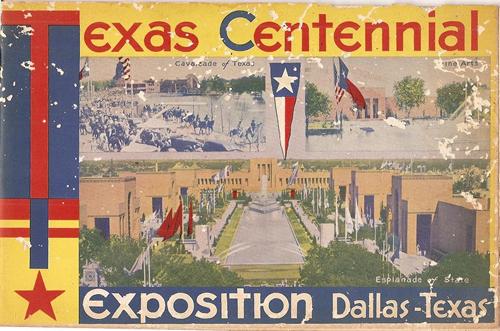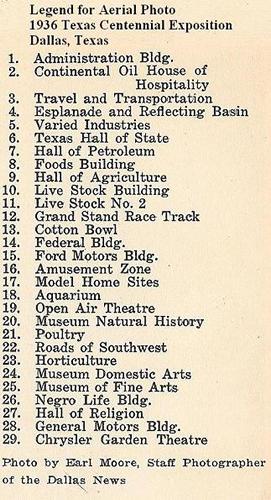The Texas Centennial. (original) (raw)
Texas Centennial Celebration brochure & book cover.
Courtesy Sarah Reveley
Introduction by Sarah Reveley
Most of us are familiar with those big granite markers with the bronze Texas star, but have no idea what a phenomenal project they represent.
Back in 1936 the State of Texas decided to hold a Centennial celebration, and like everything else Texas does, it was the biggest and best celebration of a Centennial the world has ever seen.�
The Exposition was held in Dallas, but the celebration itself involved another exposition in Fort Worth, and
statewide celebrations including construction of �9 memorial museums,�5 community centers, 16 restorations of historical structures,�2 park improvements,�20 statues of� important Texans, and over 1,000 historical markers, grave markers, and highway markers.
Almost all of these items are still around, and�thanks to recent acquisition of the 1938 book produced by the State of Texas, "Monuments Commemorating the Centenary of Texas Independence" we will be bringing the Centennial back to you.�Our project will include maps with historical trails so you can celebrate the Centennial yourself.

The 1936 Texas Centennial Exposition in Dallas - aerial photo
Click on image to enlarge
Courtesy Sarah Reveley


Postcard courtesy Sarah Reveley
Texas Centennial Exposition Buildings and Grounds


7. Monuments
 |
Searching for the Pulaski Historical Marker by Barclay Bibson Where to start describing how I visited the five foot tall granite 1936 Panola County Centennial Historical Marker for the defunct town site of Pulaski, former seat of Panola County? |
|---|
 |
Ignoring Warning Signs by Barclay Gibson Searching for the �Buried Here�1936 Texas Centennial marker �Warren Wagon Train Massacre� |
|---|
To contribute to the Texas Centennial marker fund, send a check to
Friends of the Texas Historical Commission
P.O. Box 13497
Austin, TX 78711-3497
Put Centennial Marker Fund on the check somewhere.
